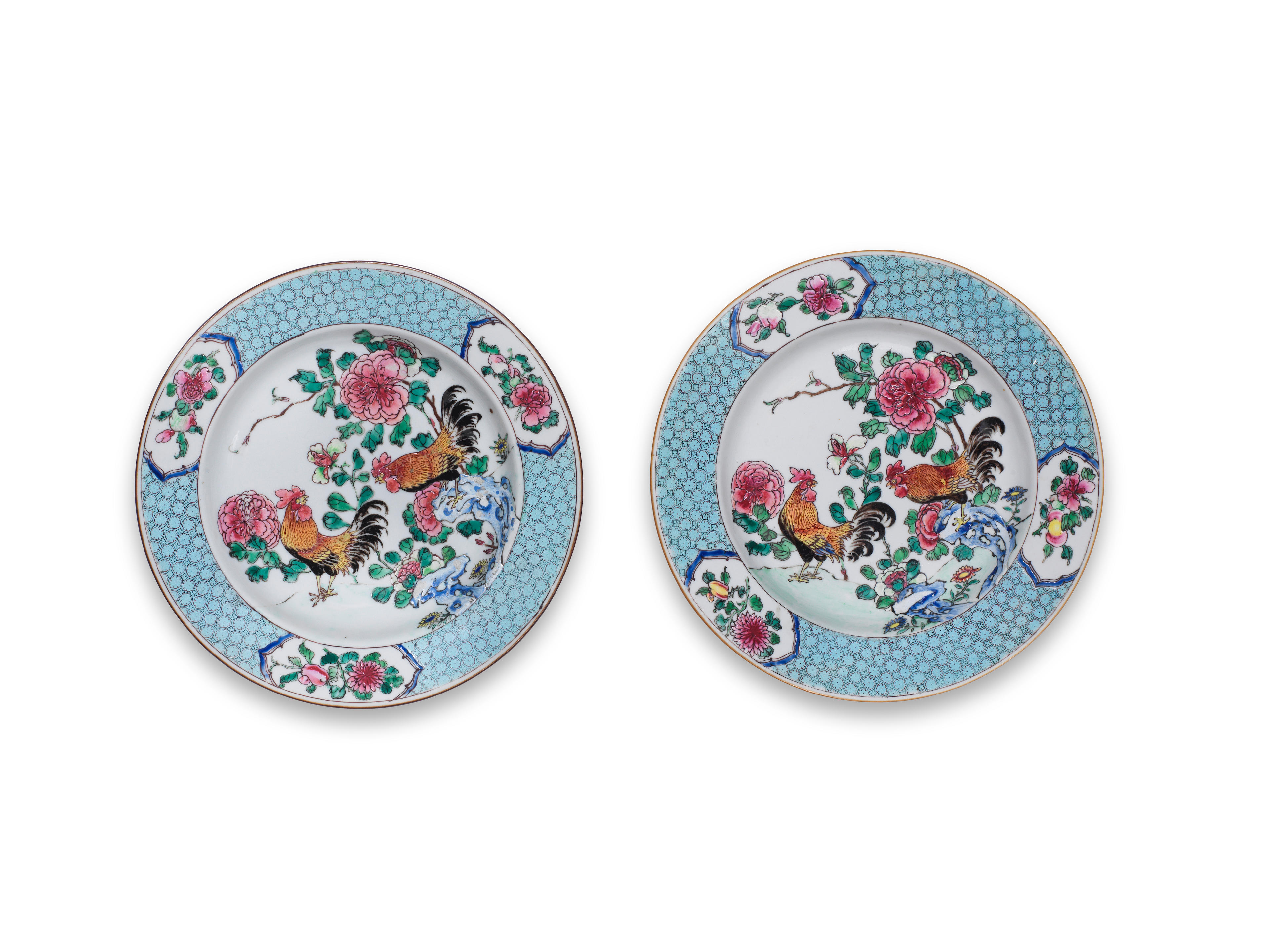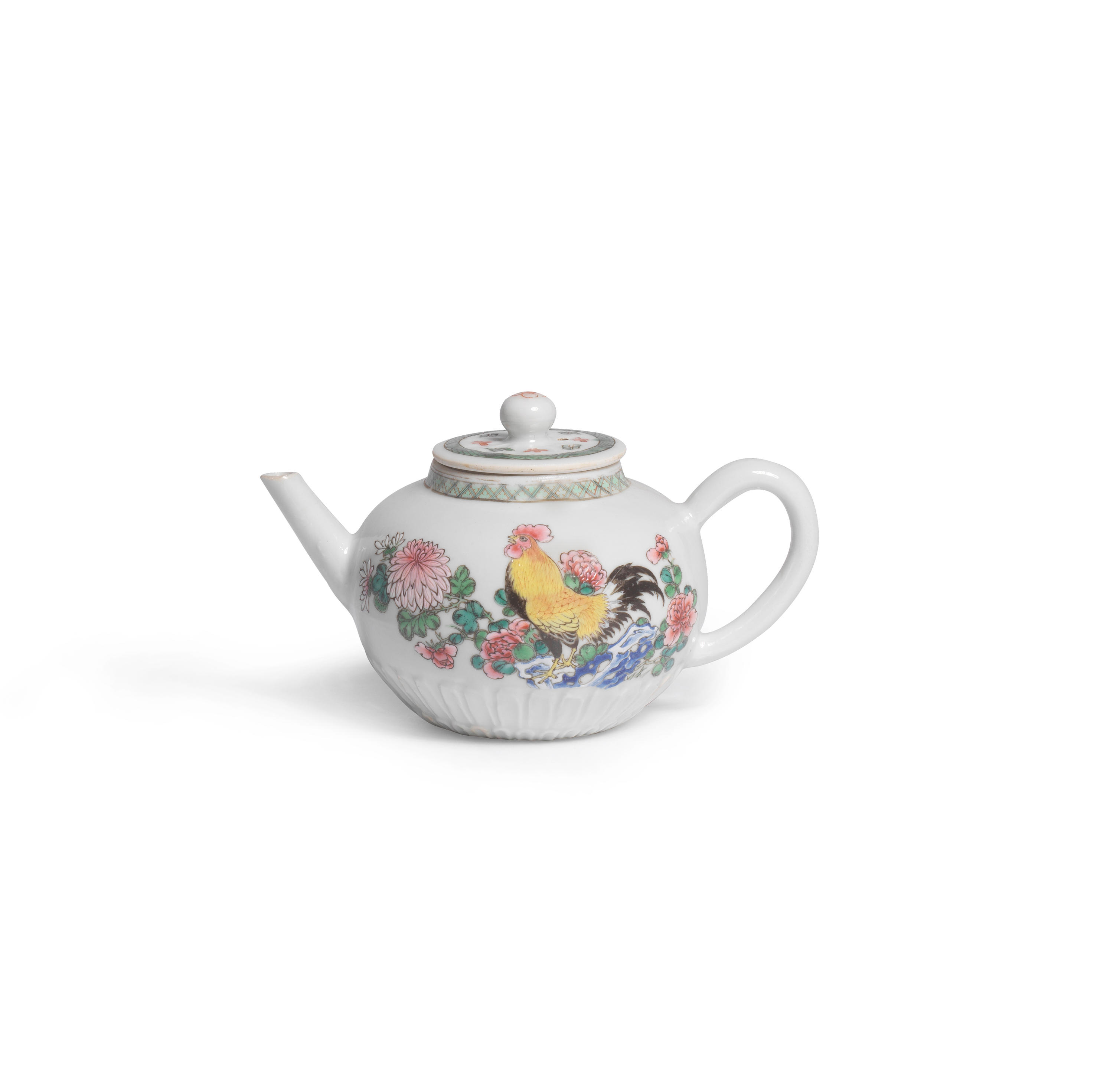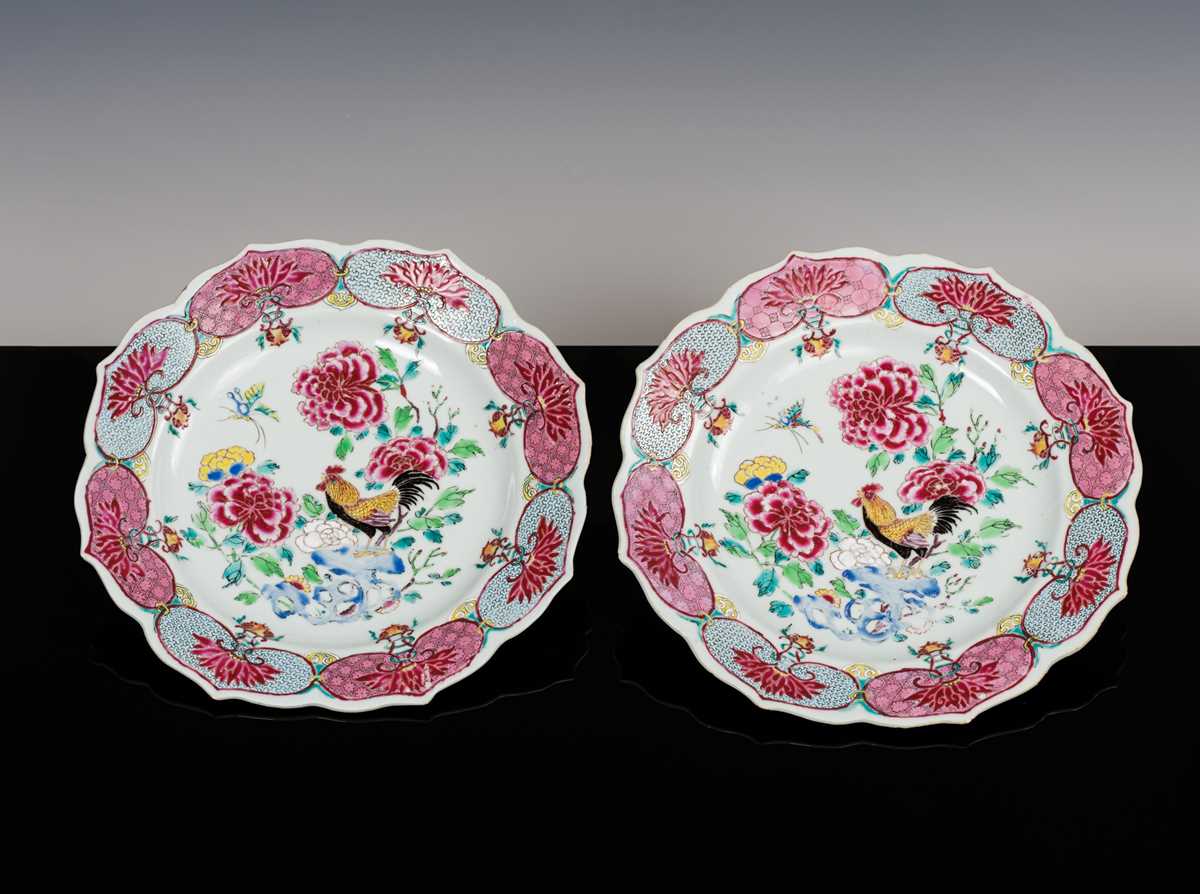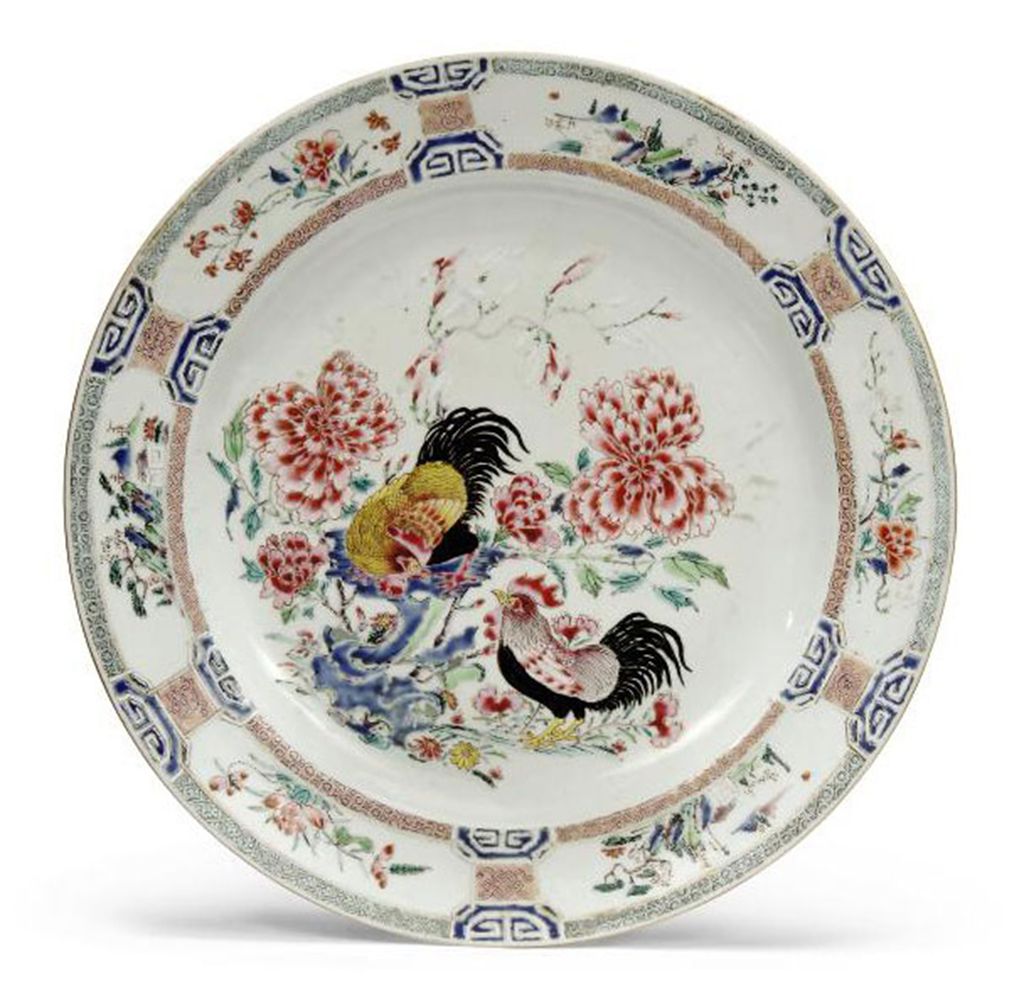A FAMILLE ROSE ‘COCKEREL EATING FLY’ PORCELAIN BOWL, 18TH CENTURY Katalognummer: CA0918-029 Four-character Yongzheng mark painted in cobalt-blue under the glaze within a square reserve China 18th century The shallow bowl is raised on a high foot and decorated on the exterior in vivid famille rose enamels with a cockerel amidst peony, daihu rocks and various other flowers. The gist of this unusual scene, however, is that the cockerel has just caught a large fly in his beak. As we know, the cockerel, or rooster, is an honored creature in China and one of the twelve animals forming the Chinese zodiac. However, the cockerel is not only regarded as a fierce-some, wise, courageous and loyal animal in Chinese society, it also was highly valued by ancient entomologists for working hard to eat up insect pests. Interestingly, the Chinese were, as in so many things, the first to discover the use of natural enemies to control pests, for example ants on citrus to reduce pest infestations, but also cockerels to combat fly pests. This movement started already around 300 b. c. and has a long tradition in agricultural China, because insect pests have always been a significant issue, especially during the earlier Qing dynasty, where they resulted in extreme famines. Even during the devastating period of the Sino-Japanese War (1937-1945), the Chinese governments made great efforts to mobilize applied entomologists to combat against agricultural insect-pests. Summarizing, it can be said that the present bowl is not only a solid piece of 18th century famille rose porcelain, but also a fascinating testimonial to an important aspect of Chinese history, and furthermore, an ingenious yet simple (and very Chinese) solution for a crucial problem. Shape: Bowl Weight: 105,4 grams Dimensions: 11,3 cm diameter Condition: There are some expected light surface wear to the enamels. The foot rim has possibly been lightly buffed. Otherwise absolutely perfect condition Provenance: American private collection, purchase at Christies. A photocopy of the Christies invoice will be released to the new owner Auction result comparison: Chinese Ceramics and Works of Art Including Export Art. Christies, London, 8 November 2005, lot 124. (for comparison with an 18th century famille rose ‘cockerel and insects’ dish) 雍正款”金雞啄蟲”粉彩瓷碗,18世紀 雍正年製四字款 中國,18世紀 品相極佳 美國私人收藏,於佳士得購入,可提供新買主票據影本。 Schätzpreis 估價: € 1.000 Startpreis 起拍價: € 500
A FAMILLE ROSE ‘COCKEREL EATING FLY’ PORCELAIN BOWL, 18TH CENTURY Katalognummer: CA0918-029 Four-character Yongzheng mark painted in cobalt-blue under the glaze within a square reserve China 18th century The shallow bowl is raised on a high foot and decorated on the exterior in vivid famille rose enamels with a cockerel amidst peony, daihu rocks and various other flowers. The gist of this unusual scene, however, is that the cockerel has just caught a large fly in his beak. As we know, the cockerel, or rooster, is an honored creature in China and one of the twelve animals forming the Chinese zodiac. However, the cockerel is not only regarded as a fierce-some, wise, courageous and loyal animal in Chinese society, it also was highly valued by ancient entomologists for working hard to eat up insect pests. Interestingly, the Chinese were, as in so many things, the first to discover the use of natural enemies to control pests, for example ants on citrus to reduce pest infestations, but also cockerels to combat fly pests. This movement started already around 300 b. c. and has a long tradition in agricultural China, because insect pests have always been a significant issue, especially during the earlier Qing dynasty, where they resulted in extreme famines. Even during the devastating period of the Sino-Japanese War (1937-1945), the Chinese governments made great efforts to mobilize applied entomologists to combat against agricultural insect-pests. Summarizing, it can be said that the present bowl is not only a solid piece of 18th century famille rose porcelain, but also a fascinating testimonial to an important aspect of Chinese history, and furthermore, an ingenious yet simple (and very Chinese) solution for a crucial problem. Shape: Bowl Weight: 105,4 grams Dimensions: 11,3 cm diameter Condition: There are some expected light surface wear to the enamels. The foot rim has possibly been lightly buffed. Otherwise absolutely perfect condition Provenance: American private collection, purchase at Christies. A photocopy of the Christies invoice will be released to the new owner Auction result comparison: Chinese Ceramics and Works of Art Including Export Art. Christies, London, 8 November 2005, lot 124. (for comparison with an 18th century famille rose ‘cockerel and insects’ dish) 雍正款”金雞啄蟲”粉彩瓷碗,18世紀 雍正年製四字款 中國,18世紀 品相極佳 美國私人收藏,於佳士得購入,可提供新買主票據影本。 Schätzpreis 估價: € 1.000 Startpreis 起拍價: € 500





.jpg)









Try LotSearch and its premium features for 7 days - without any costs!
Be notified automatically about new items in upcoming auctions.
Create an alert